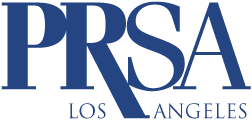On Wednesday January 28, PRSA-LA held the 2015 edition of its annual State of the State of PR review. The theme this year was “How Content is Evolving to Tell Our Stories.”
I was part of the panel along with –
Duane Bates, Senior Director of Digital Communications Strategy and New Media, Habitat for Humanity International
Daniel Lemin, President, One Good Brand
Josh Rose, Chief Creative Officer, Weber Shandwick
Robert Rose, Chief Strategy Officer, Content Marketing Institute
Rob Six, Senior Vice President of Corporate Communications, Roll International
Our moderator was Jerry Swerling, Professor and Director of Public Relations Studies, USC Annenberg School for Communication and Journalism. So it was quite a lineup! The event was sold out with standing room only attendance.
Here are the questions posed to the panel prior to the event and my answers:
Introduction:
Moderators’ Question:
I’m sure we’ll cover a wild field of discussion tonight but here’s an introductory question that focuses on our theme, “How Content is Evolving to Tell Our Stories.” The need for organizations to see themselves as content producers and distributors is all the rage today, but in fact PR people have been content creators and distributors since the days of Ed Bernays, when brochures, newsletters, and that sort of thing were our stock in trade. Putting aside the obvious need for today’s content to be more real time, interactive, and well produced, please share with us, in three minutes or less, the single most important learning you have had , or insight you have gained, about the difference between content that works and that which doesn’t work.
SF: There’s old saying that if you invent a better mousetrap, people will beat path to your door. Well, that only works when they need a mousetrap, they know you have it and they know where your door is.
The same principles apply to content. It works when it is based on research – like monitoring online conversations and tracking success with analytics. However, you have to know
- which conversations to tap into
- who to listen to
- what to listen for: like statements of intent, what are they interested in, what problem are they trying to solve
Using analytics of past content across all social channels lets you see what resonates with your audience. What do they read, what keeps them on the page, what do they share? Once you know what your audience wants and will respond to, it’s so much easier to create an effective content strategy. This social media strategy template might be helpful when planning your content.
Every piece of content has to thoughtfully constructed and delivered. It must be well-written, easy to find and easy to read and understand. It must also be easy to share. Pew Research said that the one factor that will most influence the news in this decade is the sharing of content.
Good visuals work. Last year the amount of video from people and brands in Facebook’s News feed increased 3.6X year-over-year. Tweets with images receive 18% more clicks, 89% more favorites and 150% more retweets. Posts on Facebook brand pages with photos saw the most engagement—accounting for 87% of total interactions.
However, the visuals have to be creative and well-designed and executed. Tacky images, or slide decks that are badly designed, have no visual appeal. The visual needs to either tell the whole story, or extend and enhance the story.
And just a quick side note: The media knows good visuals work. The 2014 PRESSfeed survey showed 87% of journalsts and editors said they want visuals with company news, yet only 26% of all press releases posted on the wire services have visuals.
Q1: How do you see the traditional lines between the disciplines – PR, advertising, etc. – changing, and what are the implications for practitioners who want to stay relevant?
The new PR content model is being referred to as PESO – Paid, Earned, Owned and Shared. So yes, there is a blurring of the lines. When Weber Shandwick, long known as a PR agency, starts a section devoted only to paid media (Sawmill) and makes Josh Rose the Chief Creative Officer, you know things are changing in our industry. Although still in the early stages, it is happening and it is not going to go away. It’s a growing trend and it is definitely impacting the practice of PR.
Implication for PR practitioners:
We need to learn new skills that previously were not part of our training. 59% od companies surveyed late last year say hiring of content marketing is imminent. 34% of companies say they can’t find people with digital content marketing skills to hire.
Paid Media: PR agencies will be running more paid for activity as part of their comms activity, whether that is simply boosting posts through social channels, seeding content with promoted stories and paid social or amplifying content with paid channels and paid influencer assistance.
A new type of paid amplification that’s creeping into PR is re-targeting. You can keep your news top of mind with any visitor who has been to your newsroom, for instance, by re-targeting them and show them your branded content when they visit other sites.
Owned Media: We have to start thinking like publishers. That means we have to create excellent content that meets our audience’s needs and gets them to take action. All the content and fans in the world mean nothing if they never do anything. So we need to learn to produce visual content, track content success and report how our actions have contributed to reaching the organization’s goals.
Earned Media: This is where our traditional PR skills come into play. However, there are changes here too. Same old, same old won’t cut it anymore. Pitching reporters is not the same as it was 10 or even 5 years ago. The media landscape has changed dramatically. We have to learn where the gaps are and what the media needs and wants today – and then figure out how we can fill that gap and help them produce news content they would otherwise not be able to publish. Excellent visuals is often the way in.
Shared Media: This is a relatively new concept for PR – to pay attention to who is sharing our content and how that impacts our reach and our outcomes. Influencer relations is part of shared media. Build relationships with the right influencers in your field long before you need them. With a strong network in of fans, followers and influencers in place your shared media can boost your content’s impact remarkably.
Q2: To what extent do you see practitioners actually taking advantage of the relatively new-found ability to engage directly with audiences?
SF: There definitely a lack of understanding of how to use social media to build, and actively engage with, your community online. I’ve coached several PR teams at large and mid-sized companies and they are missing opportunities, left and right. I have judged awards entries that have as their goal “Increase Facebook fans.” My question is always, Why? What’s the point of that? What do you intend to do with them? Building an audience is not an end goal -it’s a vehicle.
Take the example of Rosetta Stone – they built a groups of fans on Facebook and actively mined that group for information. So their first goal was to have a sizable group they could engage with to gather data. Once they had the data they analyzed it and discovered that they had a large group of fans who were over 50. They were interested in learning a language for a very different reason than most of their buyers : to keep their brains active and stave off dementia and Alzheimer’s disease. That led them to creating content about this subject and partnering with the AARP. It has been so successful that this part of their business converts to sales 3X faster than their core business.
Q3. Are organizations actually changing their behavior based on what they’re learning from those conversations?
SF: Yes – those that do a social audit and continue to engage and use the conversations to drive their goals and strategy are changing behaviors. There are many examples similar to Rosetta Stone. Another vehicle for active engagement and change is the growth of the influence of online reviews. Smart companies are using systems to actively reach out and manage this process and use the feedback for improving the quality of their product and service as well as for performance reviews of staff.
Q4. How is direct access and the reduced role of intermediaries – especially journalists – affecting the ethics of our business?
SF: Pew Research found that as the media resources dwindle more and more PR content is being published verbatim. That puts a bigger responsibility on us – as we become publishers we have to wear the hat of fact-checker. We have to publish excellent content that is of the same standards you’d find in a media publication. And we need to be vigilant and make sure we work with other content publishers who uphold the standards of our profession.
Q5. What’s your take on the overall health of our business? Have we fully recovered from the recession? What specific evidence, for example bigger budgets, do you see of that?
SF: Yes I think we have recovered. The increase in hiring in our field is evidence of that, BUT we unless we up our game in terms of digital skills we could find that other agencies and departments ‘eat out lunch’ in terms of content. We are the storytellers and content marketing should be our domain.
Q6. How would you advise young professionals to go about optimizing their market value and relevance in 2015 and beyond? What can they talk about beyond familiarity with social media, which is now table stakes?
SF: There are 15 skills I see as essential in 2015. Monitoring conversations, Analyzing content, SEO and keyword research, Visual content production, and the ability to track, measure and report ROI are just a few. You can download the full infographic of the 15 skills here.
Q7: And how about the mid-level professional who matured early in the media revolution and is looking over his or her shoulder, worrying about long term relevance?
SF: The same applies to those who are not digital natives. These 15 skills will keep you marketable.
Q8: What do you think will be the single most important new development or trend affecting our business in 2015?
SF: Online Reputation Management. Reputation Management has always been a core PR function. It has expanded exponentially with the Internet. Now that everyone can, and does, post their opinions online years of good work can be undone in a minute. Reputation Management will become part of risk management. Reviews, search results, conversations, social attacks should all be an integral part of the PR practice. that means we have to learn how to deal with these items and protect the image of the brand.
Q9: When defining our business a lot of people still stick with hackneyed old saws like “building positive relationships,” while ignoring the very begged question, “for what purpose are we building those relationships?” Isn’t 2015 the time for us to tell it like it is and say that we practice “Advocacy Communication?”
SF: It is certainly time for us to move to a more outcomes-based practice. As I said earlier, building relationships is important, but there has to be a purpose. Our job is to create a favorable operating climate so that the organization can expand, prosper and be viable.









